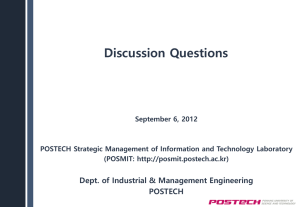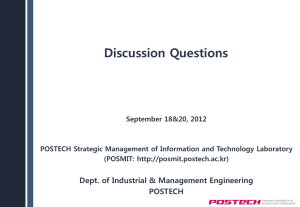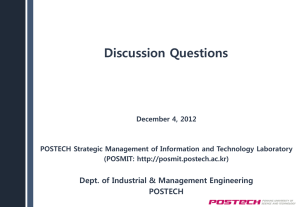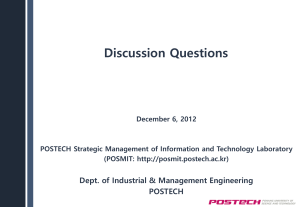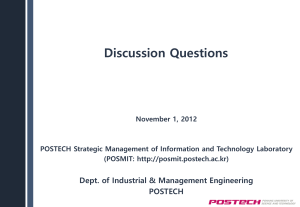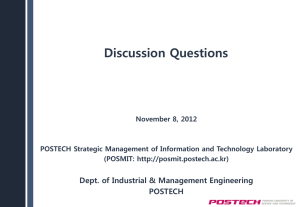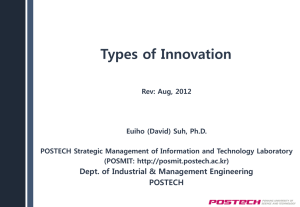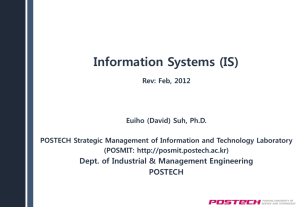R&D Centralization vs. Decentralization: Discussion Questions
advertisement
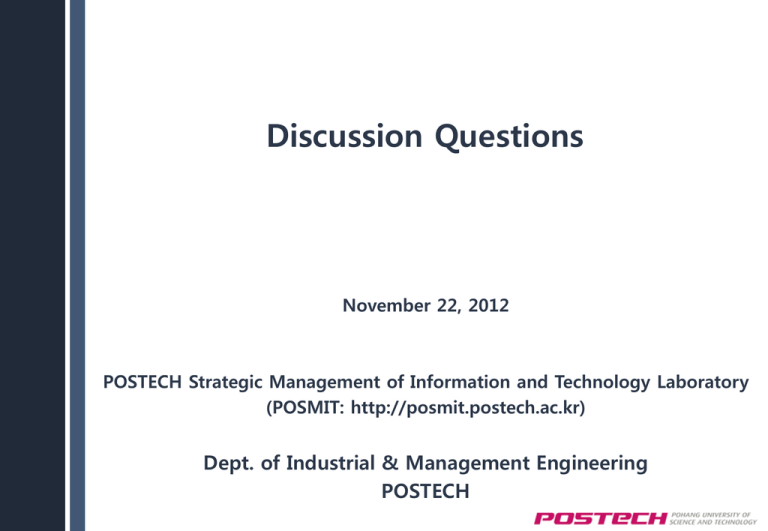
Discussion Questions November 22, 2012 POSTECH Strategic Management of Information and Technology Laboratory (POSMIT: http://posmit.postech.ac.kr) Dept. of Industrial & Management Engineering POSTECH Discussion Questions ■ Chapter 10. Organizing for Innovation 3. What factors should a firm take into account when deciding how centralized its R&D activities should be? Should firms employ both centralized and decentralized R&D activities? Value of taking advantage of economies of scale Opportunity to divide labor across a broader pool of R&D specialists Importance of tapping local knowledge resources Degree to which the divisions of the firm are likely to benefit from sharing innovations across them – Degree to which innovations will require substantial customization for the local market – Cost of coordination and communication across the divisions – – – – – Most organizations can benefit from some combination of both centralized and decentralized R&D activities, as a function of the importance of the previously mentioned factors, however the cost of coordinating the combination of centralization and decentralization must be taken into account 2 Discussion Questions ■ Chapter 10. Organizing for Innovation 4. Why is the tension between centralization and decentralization of R&D activities likely to be even greater for multinational firms than firms that compete in one national market? – Because of the greater magnitude of the differences between divisions – Characteristics of foreign markets – Likely to have diverse product needs, different operating norms, and even different legal and institutional structures – Often being source of diverse information and other resources – Physical and cultural distance between markets It is more likely the innovations developed in decentralized local markets will not be diffused to other divisions or the customization that made a product attractive in one market may make it difficult to transfer to another A greater likelihood the product will be met with the “not invented here” syndrome 3
